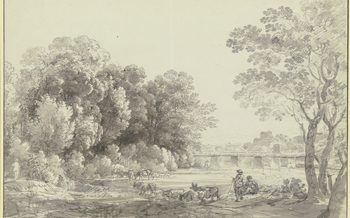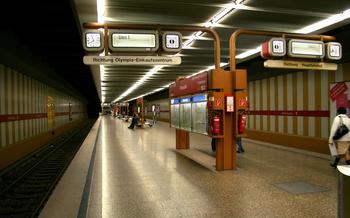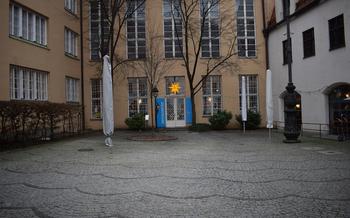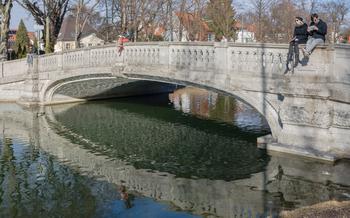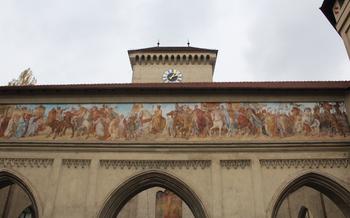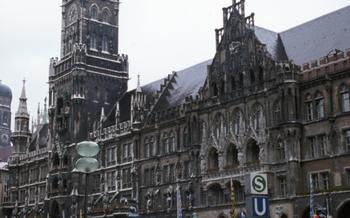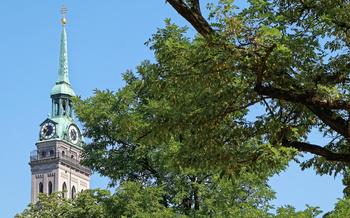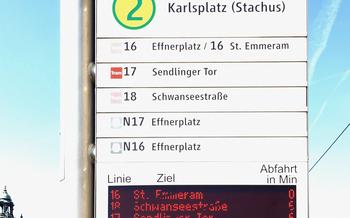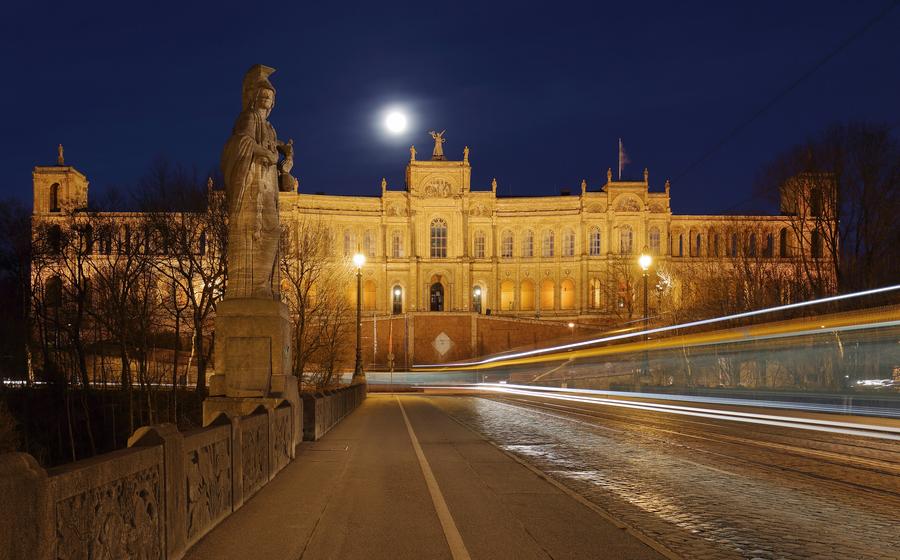
Maximilianeum
- A Majestic Landmark
- Neo-Gothic Masterpiece
- Seat of Bavarian Parliament
- Exploring the Interior
- The Maximilianeum Garden
- Historical Significance
- Guided Tours
- Changing of the Guard Ceremony
- Maximilianeum Concerts
- Exhibitions and Events
- Practical Information
- Transportation
- Nearby Attractions:
- Tips for Visitors:
- Insider Tip: Unveiling the Maximilianeum's Nocturnal Charm
A Majestic Landmark
In the heart of Munich, overlooking the Isar River, stands the Maximilianeum, a majestic palace that embodies the grandeur of Bavarian democracy. Commissioned by King Maximilian II in honor of his father, King Ludwig I, this Neo-Gothic masterpiece was initially conceived as a boarding school for gifted students. However, in 1949, it became the seat of the Bavarian Parliament, a testament to its historical significance and architectural splendor. Guided tours are available, providing visitors with an immersive experience into the history, architecture, and symbolism of this iconic landmark.
Neo-Gothic Masterpiece
Architecturally, the Maximilianeum is a stunning example of the Neo-Gothic style, embodying the revival of Gothic architecture in the 19th century. Its striking red brick exterior, adorned with intricate stone carvings, evokes a sense of grandeur and elegance. The building's facade is enriched by a series of pointed arches, pinnacles, and gargoyles, paying homage to the Gothic cathedrals of the Middle Ages. The interior of the Maximilianeum is equally impressive, featuring vaulted ceilings, intricate stained glass windows depicting scenes from Bavarian history, and majestic chandeliers. These artistic elements harmonize seamlessly to create an awe-inspiring and visually captivating space.
Seat of Bavarian Parliament
The Maximilianeum not only holds historical significance but also serves as the seat of the Bavarian Parliament, the legislative body of the state of Bavaria. The Bavarian Parliament, established in 1946, is responsible for passing laws, approving the state budget, and overseeing the government's activities. It comprises 205 members elected by the citizens of Bavaria for a five-year term.
The Parliament convenes in the Maximilianeum during its regular sessions, typically held from September to July each year. During these sessions, debates, discussions, and votes take place on various issues affecting the state, ranging from education and healthcare to environmental protection and economic development. The Parliament's decisions have a significant impact on the lives of Bavarian citizens, shaping policies and laws that govern the state.
When the Parliament is not in session, the Maximilianeum remains open to the public, allowing visitors to explore its impressive chambers and witness the grandeur of Bavarian democracy firsthand. Guided tours provide insights into the history, architecture, and functioning of the Parliament, offering a unique opportunity to learn about the political processes and decision-making that take place within these hallowed halls.
Exploring the Interior
Venturing inside the Maximilianeum is akin to stepping into a realm of grandeur and history. The grand entrance hall sets the stage for an awe-inspiring journey. Its soaring ceilings, marble floors, and intricate chandeliers create a sense of opulence and grandeur. Ascend the impressive staircase, adorned with intricate carvings and balustrades, and be greeted by a gallery lined with paintings and murals depicting significant moments in Bavarian history.
The library, with its vast collection of books, manuscripts, and rare editions, is a haven for scholars and history buffs. Its hushed atmosphere invites contemplation and study, surrounded by the wisdom of the ages. Each room within the Maximilianeum tells a story, revealing the rich tapestry of Bavaria's past and present.
The Maximilianeum Garden
Surrounding the majestic Maximilianeum palace, a verdant oasis known as the Maximilianeum Garden unfolds, inviting visitors to immerse themselves in tranquility and natural beauty. Meticulously landscaped gardens, adorned with vibrant blooms and manicured lawns, create a serene haven amidst the urban landscape. Sculptures and fountains, strategically placed throughout the garden, add a touch of artistic charm and provide a delightful spectacle for the eyes. From the garden's vantage point, panoramic vistas of Munich unfold, showcasing the city's architectural wonders and the picturesque Isar River meandering through the cityscape. Whether seeking a moment of respite or a leisurely stroll, the Maximilianeum Garden offers a tranquil retreat for visitors to rejuvenate and appreciate the splendor of nature.
Historical Significance
The Maximilianeum's story begins with King Maximilian II, who commissioned its construction in 1857 as a tribute to his father, King Ludwig I. The palace was initially envisioned as a boarding school for gifted students, a reflection of King Maximilian II's commitment to education and intellectual advancement. However, in 1949, the Maximilianeum underwent a significant transformation, becoming the seat of the Bavarian Parliament, a role it has proudly fulfilled ever since.
Guided Tours
Immerse yourself in the captivating history and intricate architecture of the Maximilianeum by embarking on a guided tour. These tours, led by knowledgeable and passionate guides, offer an in-depth exploration of the palace's grand halls, opulent chambers, and hidden corners.
Guided tours are available in several languages, ensuring that visitors from all over the world can appreciate the Maximilianeum's rich heritage. Tours typically last for about an hour and provide a comprehensive overview of the palace's history, architecture, and significance.
To ensure a spot on a guided tour, advance booking is highly recommended. You can book your tour online or through the Maximilianeum's information desk. The cost of a guided tour is typically included in the admission fee, but it's always advisable to check the official website for the most up-to-date information.
During the tour, you'll be captivated by stories of the Maximilianeum's illustrious past, from its conception as a boarding school to its transformation into the seat of the Bavarian Parliament. You'll marvel at the palace's architectural details, from its intricate stone carvings to its stunning stained glass windows, and gain a deeper understanding of the political significance of this iconic landmark.
Changing of the Guard Ceremony
Every weekday, a traditional Changing of the Guard Ceremony takes place at the Maximilianeum, providing a glimpse into Bavarian military history. The ceremony features guards in historical uniforms who march in precision, changing the flags that fly atop the building. This spectacle is not only visually impressive but also serves as a reminder of the rich cultural heritage of Bavaria. Visitors can witness the ceremony free of charge, making it a popular attraction for both locals and tourists.
Maximilianeum Concerts
Complementing the Maximilianeum's political and historical significance are its cultural offerings, primarily its classical music concerts. These concerts, held regularly in the building's intimate concert hall, provide an exceptional opportunity to enjoy world-renowned musicians and orchestras in an acoustically superb venue.
The concerts feature a diverse repertoire, ranging from classical masterpieces to contemporary compositions, ensuring something for every music lover. Renowned soloists and ensembles grace the stage, delivering captivating performances that transport audiences to a realm of musical enchantment.
To fully immerse yourself in this cultural experience, advance ticket purchase is highly recommended. The concerts typically sell out quickly, so securing your tickets early will guarantee your seat at these prestigious musical events.
Exhibitions and Events
The Maximilianeum not only serves as a political institution but also offers a variety of cultural events and exhibitions. Throughout the year, the palace hosts temporary exhibitions on a range of topics, showcasing historical artifacts, contemporary art, and scientific discoveries. These exhibitions provide visitors with an opportunity to delve deeper into Bavarian history and culture.
In addition to exhibitions, the Maximilianeum also hosts lectures, workshops, and cultural events. These events bring together experts from various fields to share their knowledge and insights on topics related to history, politics, art, and society. Visitors can attend these events to engage in thought-provoking discussions, learn from leading experts, and broaden their perspectives.
To stay updated on upcoming events and exhibitions, check the official website of the Maximilianeum. Advance booking is recommended for some events, especially those with limited seating or high demand. By participating in these events, visitors can gain a deeper understanding of Bavarian culture and contemporary issues while enjoying the unique ambiance of this historic building.
Practical Information
-
Opening hours: The Maximilianeum is open to the public from Tuesday to Sunday, from 9:00 AM to 5:00 PM. Guided tours are available during these hours.
-
Admission fees: Admission to the Maximilianeum is free of charge, including guided tours. However, certain special events and exhibitions may require a fee.
-
Accessibility: The Maximilianeum is wheelchair accessible, with ramps and elevators providing access to all levels. Assisted listening devices are also available for visitors with hearing impairments.
-
Cloakroom and restrooms: A cloakroom is available for visitors to store their belongings. Restrooms are located on the ground floor.
-
Photography guidelines: Photography is permitted within the Maximilianeum, but the use of flash and tripods is prohibited. Visitors are requested to be respectful of the privacy of others and not take photographs during parliamentary sessions.
Transportation
Reaching the Maximilianeum is a breeze with Munich's efficient public transportation system. The closest U-Bahn (underground) station is Maximilianeum, served by the U4 line. Several bus lines, including the 100, 153, and 154, also stop nearby. For those arriving by car, parking garages are available in the vicinity, such as the Tiefgarage Maximiliansplatz and the Parkgarage Isartor. If you prefer a greener mode of transport, bicycle rental options are aplenty in Munich, allowing you to explore the city on two wheels.
Nearby Attractions:
Surrounding the Maximilianeum is a wealth of attractions that entice visitors to delve deeper into Munich's cultural tapestry. A short stroll away lies the Deutsches Museum, a renowned institution showcasing scientific wonders and technological marvels. Transport enthusiasts will find solace at the Deutsches Museum Verkehrszentrum, where an array of vintage vehicles and interactive exhibits narrate the evolution of transportation.
For those seeking respite amidst nature's embrace, the serene banks of the Isar River beckon, inviting leisurely walks or invigorating bike rides. The Hofbräuhaus, a legendary beer hall steeped in Bavarian tradition, offers a convivial ambiance to savor local brews and indulge in hearty Bavarian cuisine. At the Viktualienmarkt, a bustling market square, visitors can immerse themselves in a vibrant array of fresh produce, artisanal delights, and delectable street food.
Tips for Visitors:
When visiting the Maximilianeum, it is advisable to set aside ample time to thoroughly explore the palace and its captivating surroundings. Visitors should dress respectfully, particularly when entering the Bavarian Parliament. Taking advantage of the guided tours is highly recommended, as they provide insightful information about the history and architecture of the Maximilianeum. To witness a unique spectacle, plan your visit to coincide with the changing of the guard ceremony, which takes place every weekday. This traditional ceremony offers a glimpse into Bavaria's rich military history.
Insider Tip: Unveiling the Maximilianeum's Nocturnal Charm
For an enchanting experience, visit the Maximilianeum at night, when the darkness transforms it into a captivating spectacle. The building's façade is illuminated, casting a warm glow that highlights its intricate architectural details. The surrounding gardens are bathed in a soft light, creating an ethereal ambiance. Stroll through the serene paths, marveling at the sculptures and fountains that seem to come alive under the moonlight. The Maximilianeum at night offers a unique perspective, revealing its hidden beauty and grandeur.

